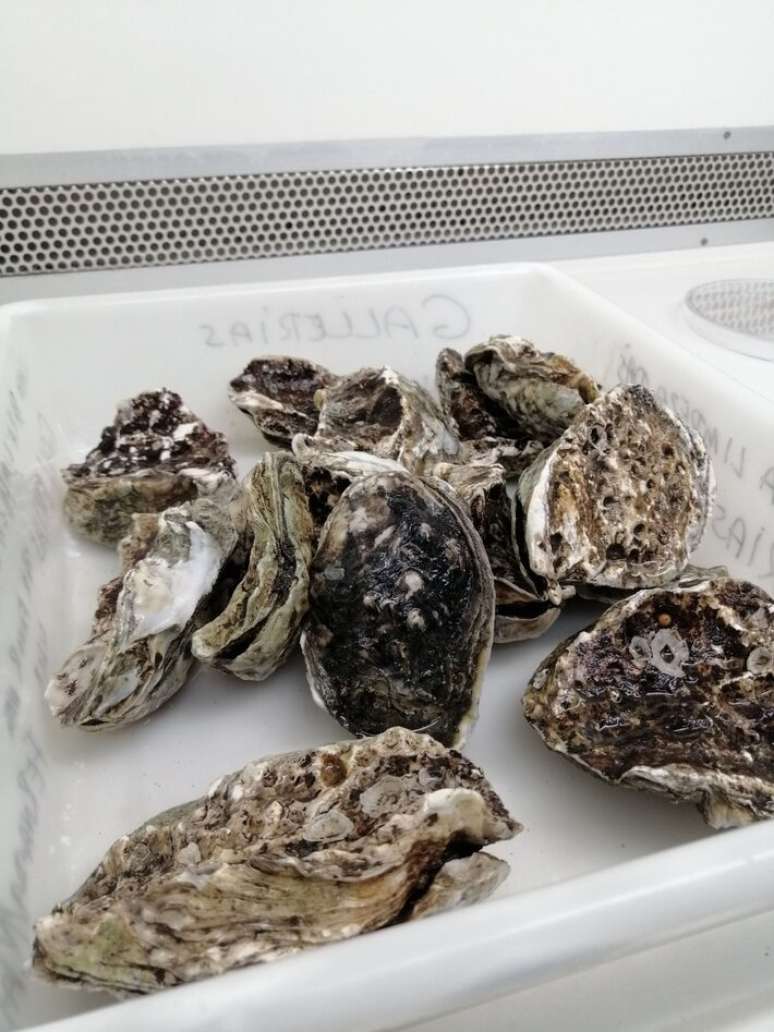Study of researchers of the USP and other institutions warns of risks of consumption of raw foods
Scientists of University of San Paolo (USP) And other Brazilian research institutes have found multi -rough bacteria and high levels of toxic metal arsenic in rough oysters ready for the consumption sold in different markets in the country.
In an article published last May in the scientific magazine Food Research InternationalThe researchers described the analysis they did in 108 oysters of the species Crassostrea Gigas AND Crassostrea Brasiliana Purchased between September 2022 and March 2023 in the markets of five Brazilian cities: Santos, Cananéia, Peruíbe (all on the coast of San Paolo), Saint Paul and Florianópolis.
In the article, the authors explain that the consumption of rough oysters has risks due to the nature of filtering the animal, which allows “bioaccumulus of a wide range of contaminants, including potentially toxic metals, pathogenic microorganisms and antimicrobial bacteria”.
Since they are filtered, the oysters develop large volumes of water, they can therefore concentrate contaminated water bacteria, especially in places that receive untreated sewage, agricultural flow and industrial waste or with a large flow of boats and bathers.
One of the most worrying results was at least the presence Five types of multi -resistant antibiotics bacteria In the molluscs analyzed.
According to scientists, the oysters transported bacteria belonging to groups considered priority from World Health Organization (WHO)As Klebsiella Pneumoniae, Escherichia coli AND Citrobacter canvinisisisisis. These bacteria, resistant to multiple classes of antibiotics, represent a risk to public health because they make the treatment of infections difficult.
“These are bacteria circulating in hospital environments and can generate serious infections in animals and humans, in particular those with a more fragile immune system, such as children, elderly and immunocompromexes”, explained to Estadão Biologist Felipe Vásquez Ponce, first author of the study. The research was the result of his doctoral thesis at the USP institute of biomedical sciences. Today the scientist makes his post-dictate in Puc-Valparaiso, Chile.
He also stressed that even healthy people, having contacts with these bacteria, can spread pathogens even if they have no symptoms. The scenario increases the risk not only of more infections in vulnerable patients, but also of a greater resistance of these bacteria.
High concentration of arsenic
The researchers also discovered that in three markets the oysters had levels of arsenic higher than the limit allowed by National Health Surveillance Agency (Anvisa)which is 1 mg/kg. In one case, the level reached 1.95 mg/kg.
According to Ponce, the presence of a certain level of arsenic is foreseen in the oysters from the characteristic of the filter already mentioned. However, when the concentration is higher than that tolerated by Anvisa, the risks are higher. Arsenic is considered a carcinogenic compound, increasing the risk mainly of skin tumors, bladder and lungs.
Ponce explains that not all arsenic compounds have the same carcinogenic potential. “In general, molluscs have arsenobetaine, a compound of arsenic that is not considered carcinogen. In the study, we cannot differentiate the amount of current arsenium that is such or type 5 or 3, considered more dangerous, but there are studies they say.
He states that a very sporadic consumption of oysters, even with a certain level of contamination from arsenic, does not represent a high risk of cancer, but that people who often consume the mollusk, in particular those with high levels of metal, can be more subject to the risk of tumors.
For those who love to eat oysters, Ponce recommends avoiding the consumption of raw foods, preferring cooked, grilled or cooked shapes. He also says that consumers should be aware of the Ostra origin, avoiding the purchase of molluscs sold in informal environments and without inspection.
The authors of the study also argue that health surveillance is intensified and that arsenic levels are monitored more carefully in these products.
Source: Terra
Ben Stock is a lifestyle journalist and author at Gossipify. He writes about topics such as health, wellness, travel, food and home decor. He provides practical advice and inspiration to improve well-being, keeps readers up to date with latest lifestyle news and trends, known for his engaging writing style, in-depth analysis and unique perspectives.








